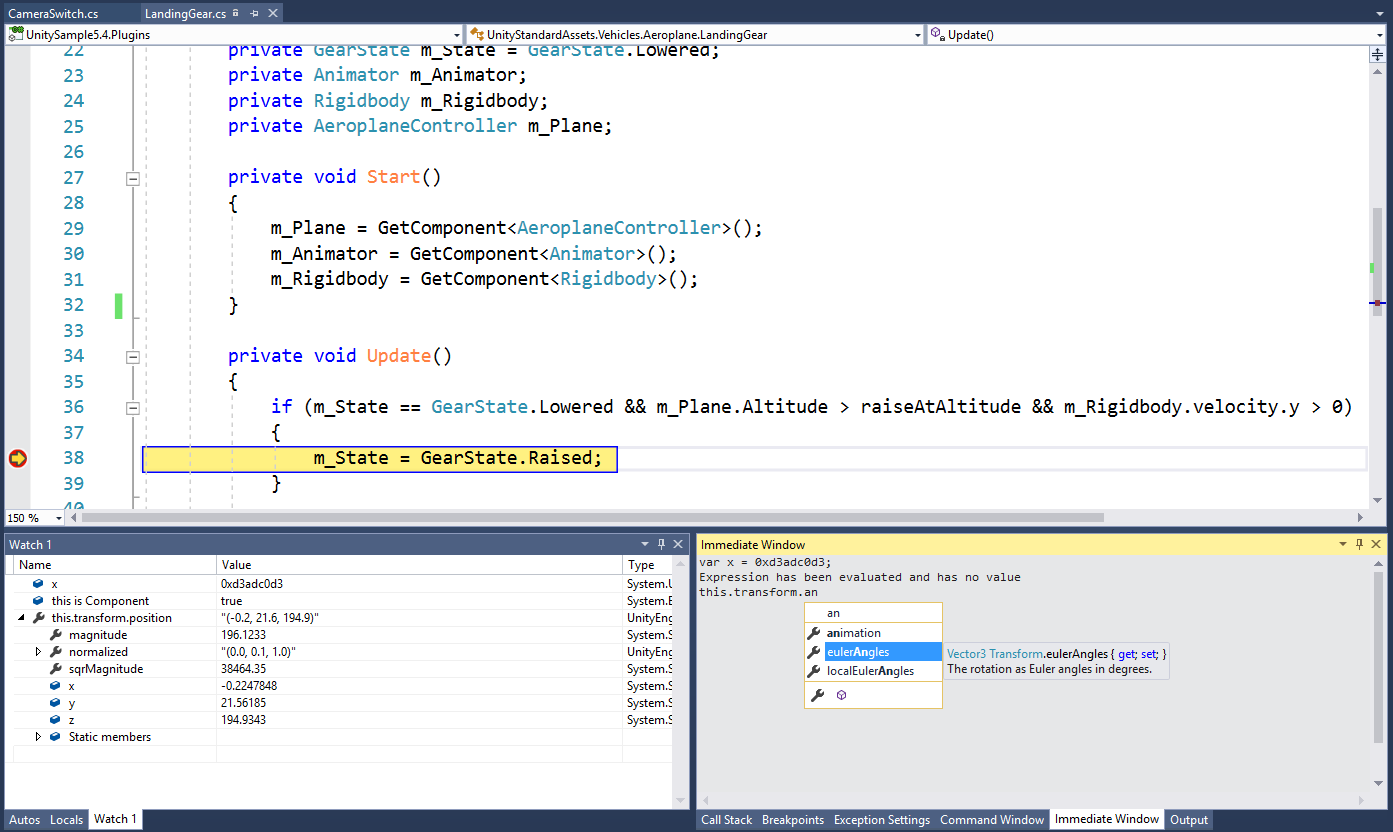
(Toggle BreakPoint) with the selected line you put a breakpoint, tightening F9 again you take the breakpoint.
#Visual studio tools for unity 3.4.0.2. how to#
ReturnValue.Direction = Ĭonvert.ToInt32(command.ExecuteNonQuery()) Īs I repeat I don't know how to apply it in layers, but here you only run the function GenerarCodigo() and the result or rather the return is assigned to your label or textbox, I feel I can't help you anymore, luck! SqlParameter returnValue = ("return_value", ) SqlCommand command = new SqlCommand("sp_autogenerarCodigo", connection) Ĭommand.CommandType = SqlConnection connection = new SqlConnection(connectionString) Return C# you can capture the return of the store procedure like this: public int GenerarCodigo() I'm not sure how to apply it to your project in layers.Change the output for a return. With Application 'devolvemos todo a su estado normal If Not DictComparativa.Exists(C.Value) Then C.Interior.Color = RGB(255, 0, 0) 'si el valor no está en el diccionario, lo pintamos en rojo Cells(.Rows.Count, 1).End(xlUp).Row) 'recorremos la columna A If Not DictComparativa.Exists(C.Value) Then DictComparativa.Add C.Value, C.Row 'metemos todos los ID en el diccionario y obviamos duplicadosįor Each C In. Set DictComparativa = New Scripting.Dictionaryįor Each C In wsComparativa.Range("A2", "A" & wsComparativa.Cells(, 1).End(xlUp).Row) 'Vamos a suponer que en ambos libros estamos comparando la columna A 'Ahora metemos los datos del libro de comparativa en un diccionario Set wsComparativa = wbComparativa.Sheets(1) 'suponiendo que la hoja a comparar sea la primera Set wbComparativa = Workbooks.Open(Ruta & Archivo, UpdateLinks:=False, ReadOnly:=True) 'abrimos el libro If Archivo = vbNullString Then Exit Sub 'si no encuentra el archivo se acabará la macro

Set ws = wb.Sheets(1) 'supongamos que esa hoja es la primera, si no sería wb.Sheets("NombreHoja")Īrchivo = Dir(Ruta & "*nombre del archivo*") ' yo aquí te recomiendo poner una palabra clave Set wb = ThisWorkbook 'supongamos que el código lo vas a poner en el libro que tiene más ID 'Primero damos valor a las variables de libros y hojas With Application 'esto incrementa la velocidad haciendo que no veamos lo que se está haciendo I hope this will serve you as an example:Option Explicitĭim wbOrigen As Workbook, wbComparativa As Workbook, wsOrigen As Worksheet, wsComparativa As Worksheetĭim C As Range, Ruta As String, Archivo As Stringĭim DictComparativa As Scripting.Dictionary 'para que esto funcione necesitas la libreria Microsoft Scripting Runtime Triangulation in 0.761s.There's a possibility that the barrier created in this way won't be 100% identical to Unity Convex Collider, but the result appears to be quite close to what you want. Treatment speed: 26332 vertices: Convex hull in 0.003s. Although the library itself has nothing to do with Unity, there is where the boys managed to set up this library in Unity without a special effort.As an example of the speed of work, a model and a generated bag can be found:

♪ It's a library for NET 4.5, which, according to examples, works fast enough even for use in the runway. However, it may be noted that the editor-in-chief of Unity himself generates both a barrier that is fast enough, so the algorithms can be used to create such a barrier.There's a way to look at existing solutions, for example. Getting this sack of colaiders from Unity is probably not going to be normal.

Convex interferes with algorithm, which prevents the swelling of shape without holes. The difference between conventional and convex is only in algorithm.


 0 kommentar(er)
0 kommentar(er)
